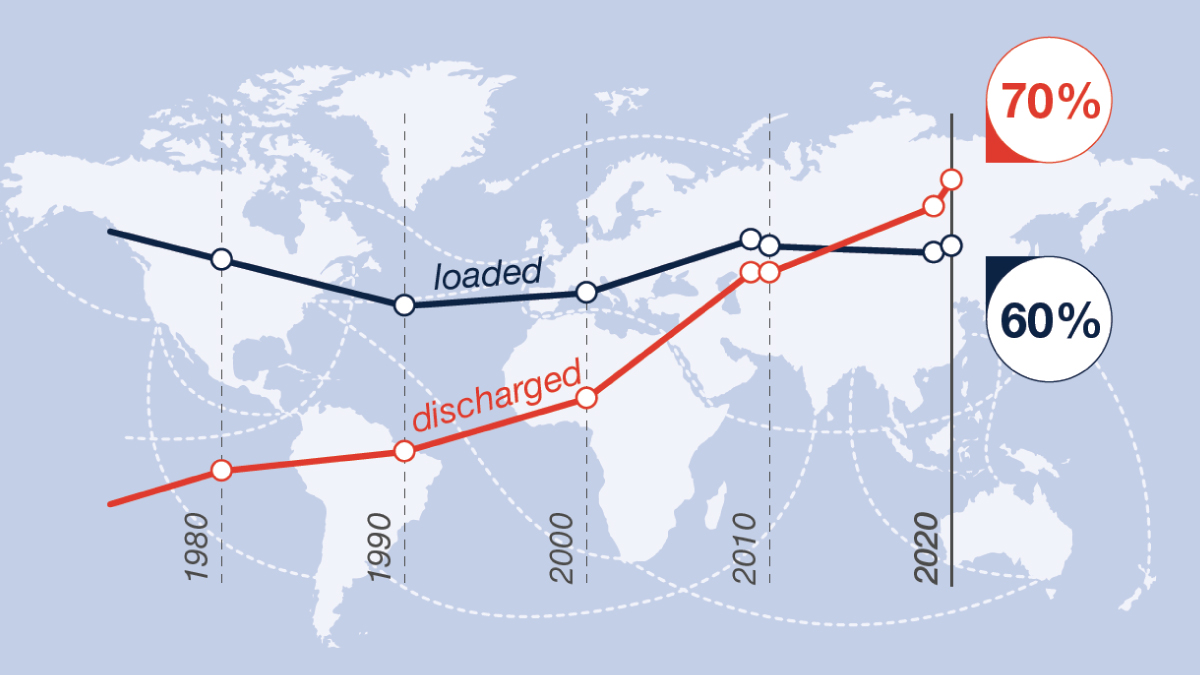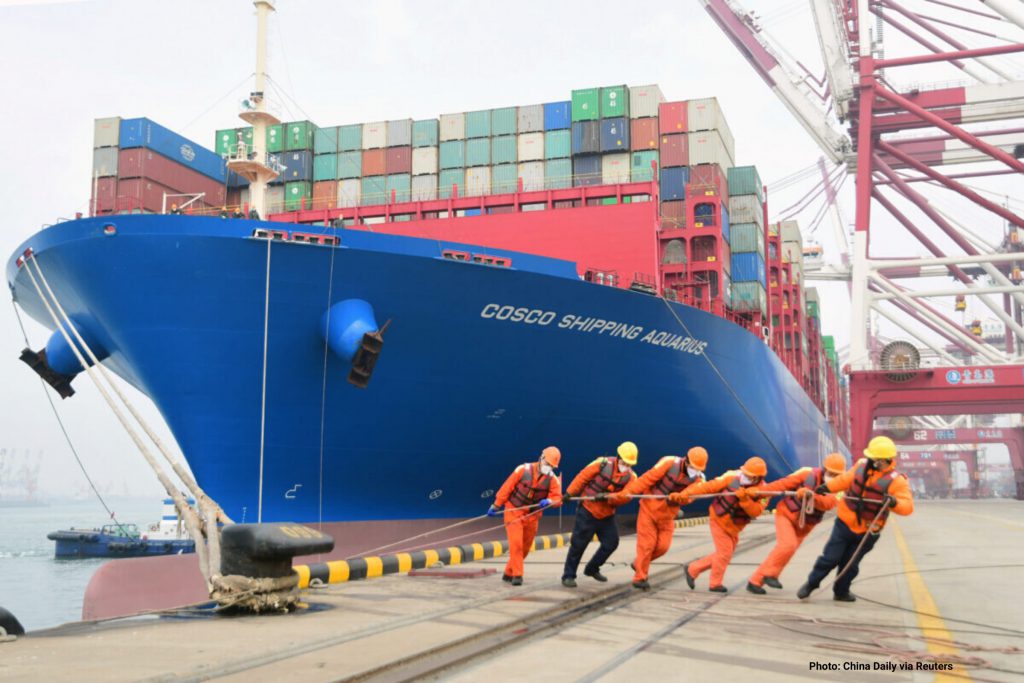The supply chain crisis was caused by backlogs across major supply chain hubs. It will almost certainly continue into 2022, negatively affecting trade and reshaping trade flows across the world.
by Rebeca Grynspan
Our livelihoods – food, jobs, energy – depend on functioning and resilient global supply chains. Unfortunately, the uncertainty caused by the progress of the COVID-19 pandemic from region to region has made it difficult to resume business on a global scale.
At the same time, fuelled by the e-commerce boom, container shipping freight rates are reaching record highs and transport capacity is being held up in congested ports. This represents a double shock for developing countries distant from global production hubs, with small island developing states (SIDS) and least developed countries affected the most.
On top of disrupting the delivery of much-needed vaccines and critical food supplies, the supply chain crisis may hike global consumer price levels by an additional 1.5 percentage points as a result of increased maritime transport costs, according to UNCTAD’s latest Review of Maritime Transport. The impact on prices in SIDS is five times higher, with 7.5 percentage points additional consumer price inflation.
What caused the supply chain crisis?
On the demand side, growing e-commerce and economic stimulus packages have put additional pressure on carriers, ports and intermodal transport providers. On the supply side, the pandemic has slowed down operations at all levels.
A container now spends 20% more time in the system for a typical door-to-door trade transaction, and ships, trailers and containers are stuck in congested ports. This means that we need more transport capacity and equipment for the same volume of trade – but this takes time to build and procure. Congestion is hurting trade and threatening our sustainable development aspirations. In the short term, only improving the performance of existing facilities can alleviate it.
The supply chain crisis was caused by backlogs across major supply chain hubs. It will almost certainly continue into 2022, negatively affecting trade and reshaping trade flows across the world. The ongoing geopolitical tensions among some of the major economies may result in renewed trade confrontations, with important repercussions for global supply chains as countries could move production to locations that are closer, geographically, and politically.
In addition, agreements such as the African Continental Free Trade Area and the Regional Comprehensive Economic Partnership are expected to influence global trade patterns. Regional trade within Africa and within the Asia-Pacific area is expected to increase, but also by diverting trade away from other routes.
Increasing resilience in supply chains
Long before COVID-19, Fourth Industrial Revolution technologies were already bringing about a reorganization of global value chains involving significant relocation of production. The pandemic has accelerated these trends, as the resilience and dependability of production have become more important, and both automation and “reshoring” (bringing production back to its country of origin) allow for more flexible adjustment to changing demand, mitigating firms’ risks in the event of a pandemic or other external shocks.
To resolve the supply chain crisis, developing countries have an opportunity to develop and strengthen regional value chains through regional pacts. These can ensure that small firms cooperate to reduce transaction costs and benefit from economies of scale.
Manufacturing in developing economies also needs long-term financing. In countries where the capacity to develop regional manufacturing hubs exists, firms may be unable to tap into value chain opportunities or scale up production when demand rises, because of lack of funding at affordable prices. National and regional development banks need to play a stronger role in this, through new regional and South-South arrangements.

Source: UNCTAD’s Review of Maritime Transport 2021
Regional integration could not only increase trade flows but may facilitate structural change, as it may be easier for local firms to export goods with higher value added to regional than international markets. Economic integration through trade agreements may also foster resilience: recent UNCTAD research shows that trade within trade agreements has been relatively more resilient against the COVID-19 global trade downturn.
At the same time, pandemic-driven digitalization requires countries to prioritize their digital infrastructures and supply chain investments. The digitalization of ports and public border agencies is a case in point. Customs automation, pre-arrival data processing, port call optimization and other digital solutions can help speed up port handling and customs operations.
The future of supply chains
The supply chain crisis gave the world a glimpse of what a climate crisis would look like if left unchecked. A global climate catastrophe will dwarf the impacts of the pandemic. Its consequences will be felt especially by developing economies that are already suffering relative economic losses three times greater than high-income countries due to climate-related disasters.
UNCTAD’s latest Trade and Development Report calls for a transformative approach to climate adaptation, with green industrial policies to drive growth and job creation along more resilient and greener value chains. A green industrial policy should proactively identify the areas that present the most significant constraints to climate adaptation investment, channel domestic and foreign investment to these activities and monitor whether these investments are managed in such a way as to sustain decent employment and to increase long-term climate security and productivity.
We need large-scale public investment in building a diversified low-carbon economy, powered by renewable energy sources and green technologies. Talks at COP26 held in Glasgow in November emphasized the urgency of scaling up climate and adaptation finance and providing the pledged $100 billion annually.
The need is real, and the time to meet it is now. Estimates show that annual climate adaptation costs in developing countries could reach $300 billion in 2030 and, if mitigation targets are breached, as much as $500 billion by 2050. We must act now to decarbonize shipping and build resilient global supply chains to keep trade flowing.
The writer, Secretary-General of UNCTAD where this opinion first appeared.
Disclaimer: The views and opinions expressed in this article are those of the authors and do not necessarily reflect the official policy or position of the publisher























